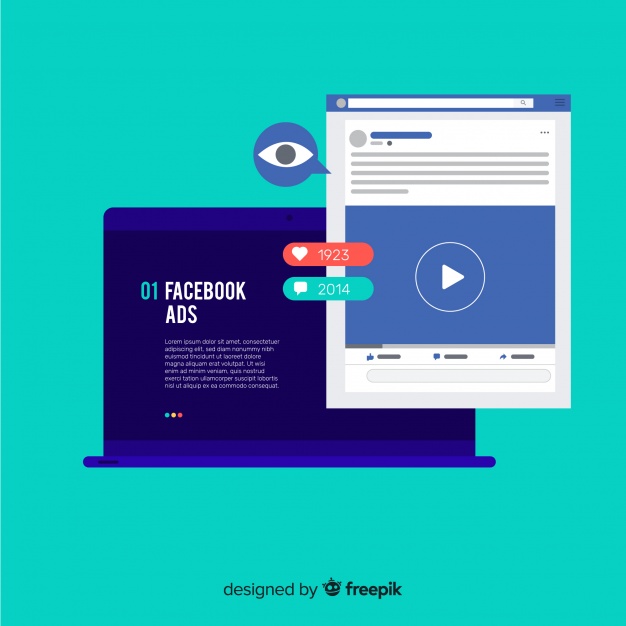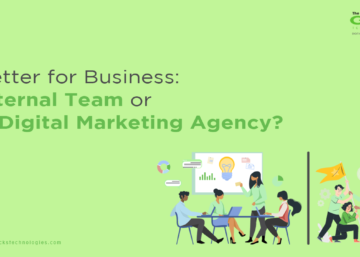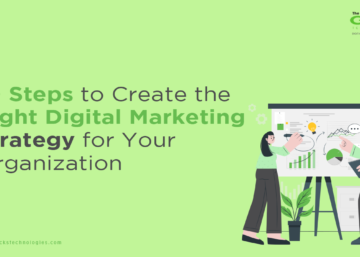How Does Apple iOS 14.5 Update Affect Your Digital Marketing Strategy?
Apple has created quite a stir for digital marketing agencies ever since its launch of iOS 14 in September 2020, and recently, the much-awaited iOS 14.5 update in May 2021. While it’s looking great for users with features like blocking apps from their data usage, optimised Siri, and unlocking the phone with Face ID while wearing a mask, it has, however, caused advertisers to revisit their digital marketing strategy going forward. To understand how this will affect businesses and their digital marketing agencies/ strategies, in particular, let’s start from the beginning!
What is the new Apple iOS 14.5 update?
The new update unlocked the App Tracking Transparency (ATT) feature that gives choice to iPhone users on their data being stored and tracked by apps. This means every time a user installs and opens an app, they will first be prompted to either Opt-in or Opt-out from the app’s ability to track their web and app activities.

Image Courtesy – Technology vector created by stories – www.freepik.com
How does it affect advertisers and digital marketing agencies?
A digital marketing agency via advertising platforms use Identifier For Advertisers (IDFA), which are random IDs assigned to every Apple device just like Android has Android Advertising Identifier (AAID), to store preferences, study behaviours and target with personalised ads for higher conversion probability. With the new update, it was predicted that as low as 10-15% of users would allow apps to store and track their information. However, after the launch of the feature, reports suggest that only around 5% of users have allowed tracking. The lesser the users choosing data disclosure, the worse it is for advertisers like Facebook and Google as well as businesses/ brands/ digital marketing agencies to action personalised ad campaigns.
This inability to launch personalized or remarketing campaigns for iOS users will increase the cost per click for online ads, eventually increasing the cost per action or cost per user acquisition for businesses. This will specifically make marketing to iOS users difficult for start-ups and SMEs due to higher marketing budget requirements henceforth. That’s the argument, even Facebook is giving in their campaign against Apple for their new feature launch.
Also, on the other side, any app not conforming with Apple’s new App Tracking Transparency (ATT) framework will be directly blocked by the App store. While it is a reasonable threat for digital marketing agencies and advertising platforms in general, Facebook is expected to face the major brunt of the situation followed by albeit less in severity, is Google.

Image Courtesy – https://www.pexels.com/photo/marketing-man-people-woman-7889173/
How will it affect digital marketing strategies via Facebook ads?
Through Facebook ads, digital marketing agencies will no longer be able to collect campaign conversion statistics and reports in real-time. This will rather be redistributed by Apple’s SKAdNetwork API server; thus a delay of 48-72 hours can be expected easily. For this reason, certain conversion events will get hampered.
It will eventually have an effect on your campaign costs as well as user acquisition costs.
How is Facebook tackling the issue?
(i) Tracking tools
Before the update, there was unlimited access to the number of events to track online. Here, events mean a user’s journey of ‘add to cart’, ‘buy’, etc. This will now be limited to 8 per website or domain. This will further concentrate a digital marketing strategy to rank the 8 events in order of preference- ‘buy’ is more important than ‘add to cart’ or less. As per this ranking, only the main events will receive information from the API server. It will become very important for the Marketers to know when to place and activate the conversion tracking on a website. If it is placed too early, it will get wasted.
(ii) Targeting time frame
Earlier, digital marketing agencies through Facebook Ads could track information for 28 days or 7 days per page views, which will now be 7 days post click and 1 day post view. As per the SKAdNetwork guidelines, only click-based attribution will be counted for access to advertisers, demographic breakdowns won’t be available, campaign IDs will be limited to 100 per ad network. Facebook thus encourages campaigns to be run through non-IDFA match methods like Facebook Login which would give access for better tracking and measurements.

Image Courtesy – Background vector created by freepik – www.freepik.com
How will it affect digital marketing strategies via Google ads?
Thanks to Google’s more diversified ad network which doesn’t rely much directly on mobile ad revenues, the platform is likely to impact less with Apple’s latest update. However, it will be foolish to assume that digital marketing agencies shouldn’t be prepared to expect certain changes.
Earlier, we heard that Apple was planning to remove Google’s Search Widget from their phones and Google had to crack a yearly deal of approx. $8 – $10 billion with Apple to convince them to keep the widget!
How is Google tackling the issue?
(i) Encouraging first-party tags
Implementing a first-party tag like the Google Ads tag will allow the collection of data live. This will be specifically a challenge for companies in the pharma, manufacturing, restaurants, groceries, convenience stores and many others, with heavy reliance on brick-and-mortar sales and distribution networks.
(ii) Changes to App-focused and Web campaigns
For app-focused campaigns, brands should plan to be able to get all relevant third part information within only 8 or lesser app installs or any other app event/ conversion and implement SKAdNetwork by upgrading to the latest version of Google Analytics in Firebase. Brands and agencies can also try to switch to tROAS and tCPA bidding strategies to control costs.For web campaigns you need to ensure to implement new first-party tag like gTag.js using new Google Analytics or if you have Google Tag Manager already installed on your website, you do not need to worry. You can also enable audience expansion on Remarketing or Customer Match campaigns to increase reach.
(iii) Coming up with FLOC soon
Google is working on it’s new tracking algorithm called FLOC. It will create cohorts of users instead of tracking individual users. Hence, respecting everyone’s privacy. And, will allow marketers to target their customers based on these cohorts. Definitely sounds like a promising way out.

Image Courtesy – People vector created by pch.vector – www.freepik.com
In conclusion, for digital marketing agencies and digital marketing strategies
While Facebook and Google are working with Apple via suggestions to improve the way iOS ads are tracked and measured, only time will tell how it works out. Meanwhile, platforms like Amazon and other affiliate marketing platforms are more or less unlikely to face severe changes due to the new update. The question still arises is how digital marketing agencies guide their clients or how digital marketers guide their employers/ businesses through this transitory phase in the digital marketing world. Here are a few ways to stay afloat and continue generating revenue for your brands-
(i) Apple is tricky; Android remains unchanged, so focus more because it is a matter of fact that Android users outnumber Apple users.
(ii) Optimally using your website through its tracking capabilities or analytics tools will help to create audience clusters based on visitors.
(iii) Organic efforts will yet again prove beneficial, just by focusing on your social media and content strategy.
(iv) Huge focus will be needed to build first-party data generation capabilities via e-mails or contact numbers. This will help platforms like Facebook to build a lookalike audience for the business and at least reach out to people similar to their existing customers.




